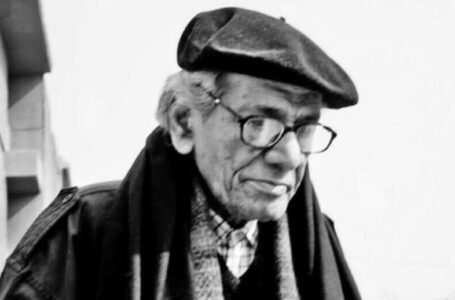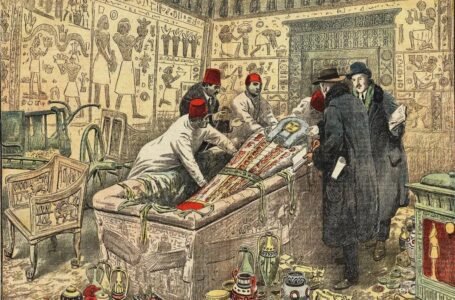Jat Regiment : Stories of Bravery from Battlefield

~Trushti Dand
The Jat Regiment is one of the oldest and most decorated infantry regiments of the Indian Army. Its history dates back to 1795, when the East India Company raised the Calcutta Native Militia, which later became the 14th Bengal Native Infantry. This unit formed the basis for the present Jat Regiment. Over time, various Jat-class units emerged under British command, and by 1922, these were reorganized under the 9th Jat Regiment as part of the post-World War I restructuring of the British Indian Army.
After India gained independence in 1947, the regiment was rechristened the Jat Regiment and continued its service in the Indian Army. The regiment primarily recruits from the Jat community, a dominant agricultural and martial group mainly found in Haryana, Punjab, Rajasthan, Uttar Pradesh, and Delhi. The Jats have a long-standing martial tradition and have served in numerous armies throughout Indian history, from Rajput kingdoms to the Mughal and British empires. The modern Jat Regiment continues to embody the bravery and pride of its community while adapting to the contemporary requirements of warfare.
Participation in British Campaigns and Colonial Conflicts
During British rule, the Jat Regiment and its predecessor units participated in several key military operations. Jat battalions served in campaigns in Afghanistan, Burma, and China. They were actively involved in the Second Anglo-Afghan War (1878–80) and the Third Anglo-Burmese War (1885–87). These operations tested the Jats’ resilience in tough terrain and hostile conditions.
In the early 20th century, the regiment took part in internal security duties and frontier skirmishes on the North-West Frontier Province. The British valued the Jats for their rugged physical strength, straightforwardness, and sense of loyalty. Their military performance during this period earned the community a reputation for disciplined soldiering and courage under fire, qualities that continued into the World Wars.
Role in World War I (1914–1918)
During World War I, the Jat Regiment was deployed on several fronts, including Mesopotamia, East Africa, Egypt, and Palestine. Units like the 14th Murray’s Jat Lancers and 2nd Battalion, 9th Jat Regiment saw intense combat in harsh environments. In Mesopotamia, Jat soldiers were part of the British Indian force attempting to secure oil-rich territories from the Ottoman Empire.
They participated in the Battle of Ctesiphon (1915) and the siege of Kut-al-Amara, enduring heavy losses in prolonged campaigns. In Egypt and Palestine, they were involved in the Sinai and Palestine Campaign, fighting Ottoman and German forces. Despite extreme heat and supply challenges, the regiment performed with distinction. Many soldiers received Indian Order of Merit (IOM) and Military Cross (MC) awards for gallantry. Their participation significantly contributed to the Allied success in the Middle Eastern theatre.
Role in World War II (1939–1945)
In World War II, the Jat Regiment expanded and contributed several battalions to the war effort. The 3rd, 4th, and 6th Battalions of the 9th Jat Regiment were sent to North Africa, Italy, and Burma. Jat soldiers served in the Western Desert Campaign and fought in major engagements such as the Second Battle of El Alamein (1942) alongside the British Eighth Army. Their efforts helped stem the Axis advance into Egypt and the Suez Canal zone.
In the Burma Campaign, the regiment was involved in fighting the Japanese in the dense forests and mountains of Southeast Asia. They played a vital role in the Arakan offensive and supported the Chindits in long-range penetration operations. In Italy, they assisted in the Allied push through the Gothic Line, contributing to the liberation of southern Europe. Jat soldiers were awarded numerous gallantry medals for their bravery and combat effectiveness during the war.
Role in the Post-Independence Era: Indo-Pak and Indo-China Wars
Following independence, the Jat Regiment was among the first to see action in the Indo-Pak War of 1947–48 in Jammu and Kashmir. They played a key role in securing strategic positions against Pakistani tribal and regular forces. In the 1962 Sino-Indian War, the regiment fought in the NEFA (North-East Frontier Agency) and Ladakh regions. Despite being under-equipped and facing logistical challenges, the soldiers displayed remarkable courage.
During the Indo-Pak War of 1965, Jat battalions fought fiercely in the Lahore and Sialkot sectors. One of the most celebrated actions was carried out by Company Quartermaster Havildar Abdul Hamid, who destroyed three Pakistani Patton tanks with a recoilless gun near Khem Karan, earning the Param Vir Chakra posthumously.
In the 1971 Bangladesh Liberation War, the Jat Regiment fought on both the eastern and western fronts. In Jessore and Khulna, Jat soldiers were instrumental in pushing back Pakistani forces, contributing to India’s victory and the creation of Bangladesh. The regiment earned several unit citations and individual bravery awards for their performance.
Gallantry Awards and Battle Honours
The Jat Regiment is among the most decorated regiments of the Indian Army. It has won 1 Param Vir Chakra, 4 Ashoka Chakras, 11 Maha Vir Chakras, 32 Vir Chakras, and hundreds of other medals and commendations. The most famous recipient is CQMH Abdul Hamid, awarded the Param Vir Chakra for destroying enemy tanks under heavy fire during the 1965 war.
The regiment has battle honours including El Alamein, Burma, Kut-al-Amara, Khem Karan, Sialkot, Jessore, and Khulna, reflecting its wide operational involvement. Several battalions have also received the Chief of Army Staff (COAS) Unit Citation and President’s Colours for distinguished service.
Notable Officers
Over the years, the Jat Regiment has produced several distinguished officers who have risen to high ranks in the Indian Army. Lieutenant General D. S. Chauhan and Major General B. C. Joshi (who later became the Chief of Army Staff) are among the regiment’s most noted alumni.
Lt Gen Hanut Singh, although from the Armoured Corps, had close ties to Jat regimental heritage and is revered for his role in the Battle of Basantar (1971). The regiment has also produced numerous brigade and division commanders, regimental instructors, and training leaders who have shaped modern Indian military doctrine.
Organization, Recruitment, and Training
The Regimental Centre of the Jat Regiment is located in Bareilly, Uttar Pradesh. The regiment comprises over 20 battalions, including regular, Territorial Army, and Rashtriya Rifles units. It recruits primarily from the Jat community of Haryana, Rajasthan, Western Uttar Pradesh, and Delhi.
Training at the Regimental Centre emphasizes physical endurance, fieldcraft, high-altitude warfare, counter-insurgency, and weapon handling. The regiment also integrates new technologies and tactics in its operations, ensuring its soldiers are combat-ready in modern warfare scenarios. Several battalions are deployed in counter-terrorism operations in Jammu & Kashmir and internal security duties in northeastern India.
Regimental Symbols, Traditions, and Identity
The Jat Regiment’s insignia features crossed khukris with the Ashoka emblem above, symbolizing courage and national service. The regimental motto is “Sangathan Wa Veerta” which means “Unity and Valour.” Its war cry is “Jat Balwan, Jai Bhagwan!”, reflecting strength and divine blessing, often shouted during battle and ceremonial parades.
The regiment celebrates Regimental Day, Army Day, and other important anniversaries with ceremonial parades, sports competitions, and remembrance services for martyrs. Cultural events that highlight Jat customs, such as traditional wrestling (kushti), folk music, and harvest festivals, are also held at the Centre. The strong regional and community bonds among the troops help foster regimental cohesion and morale.
Cultural Importance and Community Pride
The Jat Regiment holds immense pride within the Jat community. Traditionally farmers and landowners, Jats have long been respected for their physical endurance and fearlessness. Many Jat families have sent generations of men to serve in the army, and the regiment is seen as a symbol of their martial culture.
In regions like Haryana and Western Uttar Pradesh, army service is not just a career but a tradition passed from father to son. The tales of Jat soldiers’ heroism—especially that of CQMH Abdul Hamid—are told in schools, villages, and army gatherings. These narratives reinforce a sense of identity, honor, and duty within the community. The regiment’s association with the working class and rural pride has also made it a symbol of national integration and discipline.
Legacy and Modern-Day Relevance
The Jat Regiment’s legacy is built on two centuries of battlefield experience, gallantry, and patriotism. Its soldiers have fought in some of the most decisive battles in Indian history—both under the British and independent India. With every major war, from El Alamein to Kargil, the regiment has contributed courageously and effectively.
Today, the regiment continues to play a vital role in India’s defense forces. Its battalions are deployed in strategic border areas, UN peacekeeping missions, and counter-insurgency operations. It is fully mechanized, trained in combined arms warfare, and integrated into India’s rapid response forces. As the Indian Army modernizes, the Jat Regiment remains committed to blending its historic warrior values with new technologies and strategies.
Conclusion
From colonial campaigns to the frontlines of modern warfare, the Jat Regiment has remained a symbol of strength, unity, and courage. Its soldiers, drawn from a proud and resilient community, have consistently upheld the highest traditions of the Indian Army. With gallantry etched into its history and a clear role in India’s future defense strategy, the Jat Regiment continues to live by its motto—“Sangathan Wa Veerta”—proving that unity and valor are timeless virtues on the battlefield and beyond.


